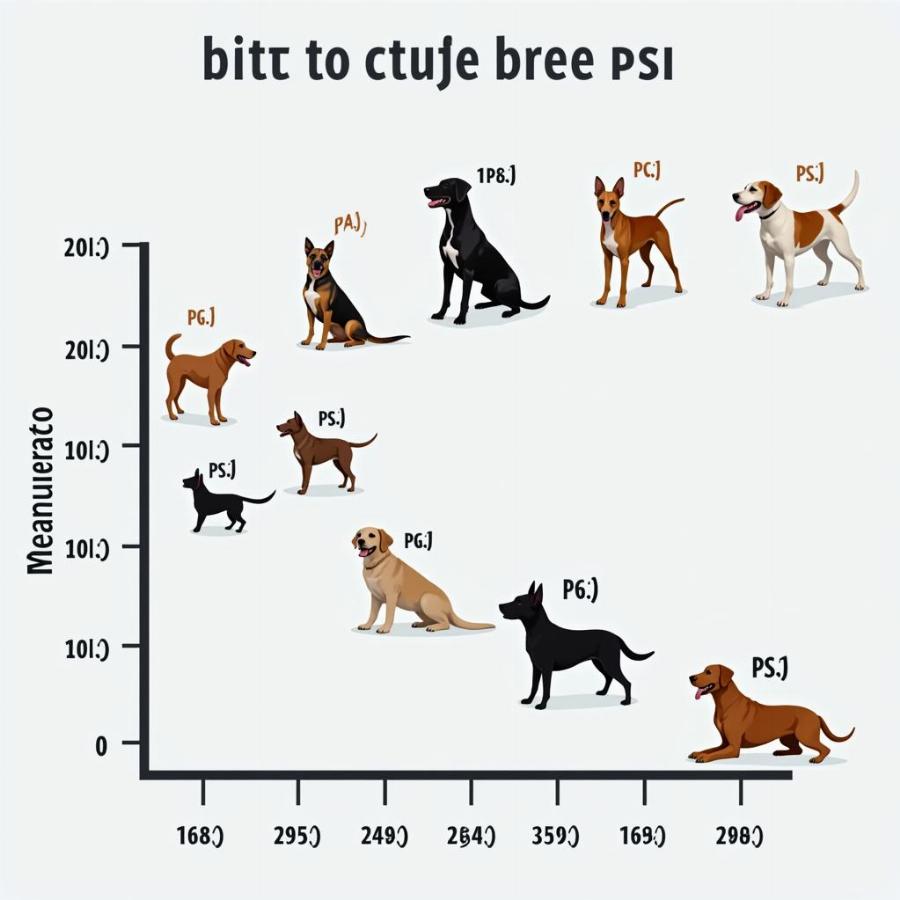Dog bites can be a serious issue, and it’s natural to wonder about the bite force different breeds possess. While bite power is often associated with aggression, it’s crucial to remember that it’s just one aspect of a dog’s behavior. Understanding bite force, the factors influencing it, and responsible dog ownership are essential for ensuring everyone’s safety.
This article delves into the fascinating world of canine bite force, exploring the science behind it, debunking common myths, and highlighting responsible dog ownership practices.
What Determines a Dog’s Bite Force?
Several factors contribute to a dog’s bite force, including:
- Breed: Certain breeds, like Mastiffs and Rottweilers, are naturally bred for strength and guarding, inherently possessing greater muscle mass in their jaws.
- Size and Weight: Larger, heavier dogs naturally have more muscle mass, leading to a stronger bite.
- Head Shape: Dogs with larger, broader heads tend to have more powerful jaw muscles.
- Temperament: While not directly determining bite force, a dog’s temperament plays a significant role in whether they would bite.
 Dog Bite Force Comparison Chart
Dog Bite Force Comparison Chart
Debunking Myths About Dog Bite Force
Misconceptions about dog bite force abound. It’s crucial to rely on facts:
-
Myth: A dog’s bite force directly correlates with its aggression.
-
Fact: While a powerful bite can inflict more damage, it doesn’t necessarily mean a dog is aggressive. A dog’s tendency to bite depends on factors like socialization, training, and individual temperament.
-
Myth: Small dogs have weak bites.
-
Fact: While smaller dogs have less jaw strength, their bites can still cause injury, especially to children.
Responsible Dog Ownership: Preventing Bites
Preventing dog bites starts with responsible ownership. Here’s how you can contribute to a safe environment:
- Socialization: Early and consistent socialization is crucial. Exposing your dog to various people, animals, and environments helps them develop appropriate social skills.
- Training: Obedience training is paramount. A well-trained dog is less likely to bite out of fear or confusion.
- Understanding Body Language: Learn to interpret your dog’s body language. Signs like growling, lip licking, or yawning can indicate stress or anxiety.
- Responsible Interactions: Never leave children unsupervised with dogs, regardless of breed or size.
FAQs About Dog Bite Force
Q: What is the average bite force of a dog?
A: The average bite force varies significantly between breeds. However, a study indicated a mean bite force of 320 PSI for domestic dogs.
Q: Which dog breed has the strongest bite force?
A: The Kangal Shepherd, a Turkish breed, holds the record for the strongest bite force among dogs, measured at an astonishing 743 PSI.
Q: What should I do if I’m bitten by a dog?
A: Immediately clean the wound thoroughly with soap and water, seek medical attention, and report the incident to your local animal control.
Seeking Further Information
Have more questions about dog bite force or responsible dog ownership? Explore our other informative articles:
About Beaut Dogs
Beaut Dogs is your trusted source for all things related to dog care, providing insightful information on various breeds, their characteristics, and responsible ownership practices.
For personalized guidance and support, reach out to our experts at [email protected]. Let Beaut Dogs be your companion in navigating the wonderful world of canine companionship.